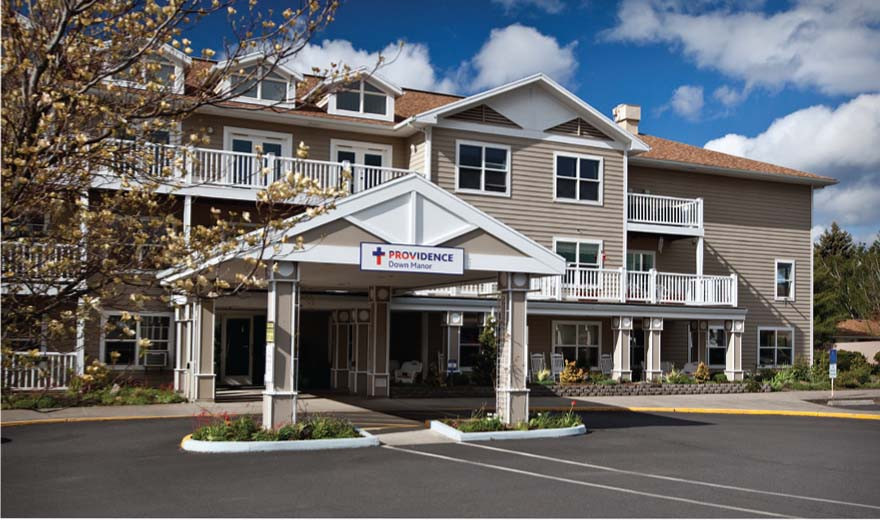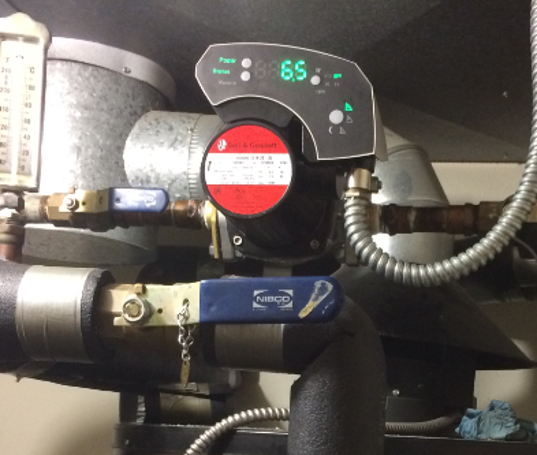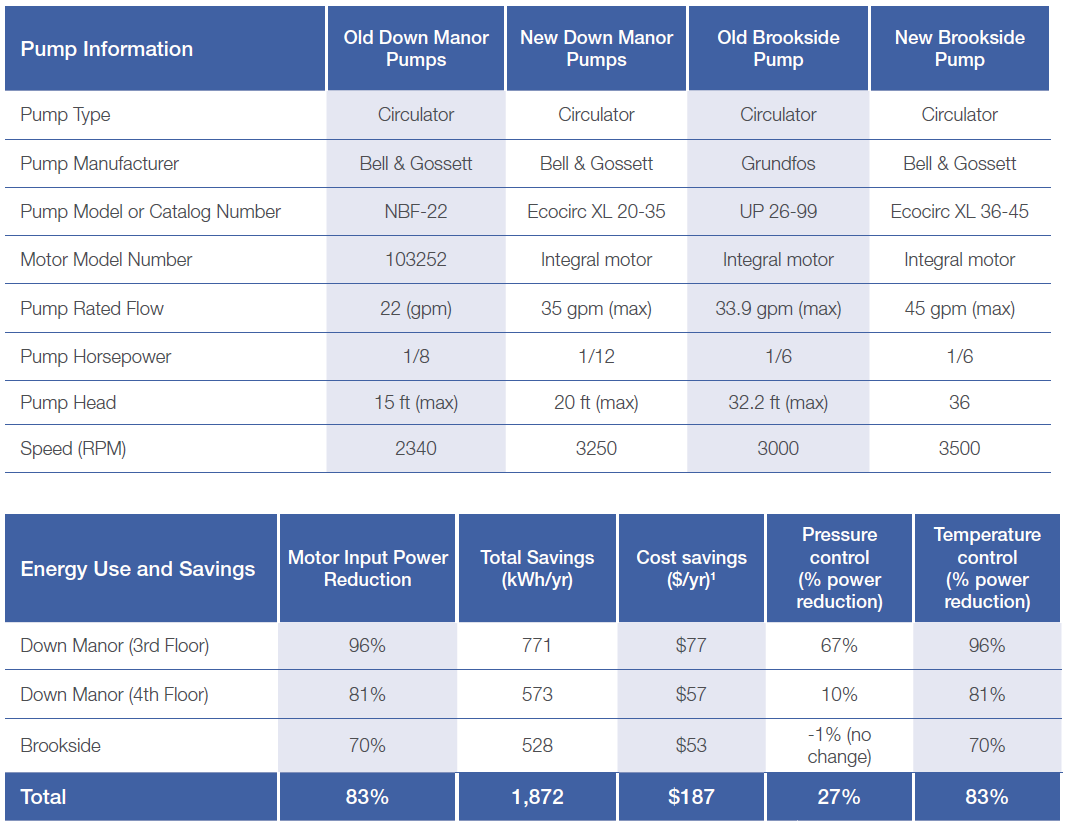Upgrading to efficient circulators provides performance and savings
THE PROBLEM AND OPPORTUNITY
Providence Down Manor is the only independent retirement community in Hood River, OR. Down Manor provides comfortable living for independent and active seniors, without any of the burden or worries of homeownership. With amenities like personal gardens, exercise classes and a quarter-mile walking path around the premises, Down Manor creates a healthy, vibrant and relaxed environment for its 115 residents.

Large, multi-unit buildings like Down Manor and the neighboring Providence Brookside Manor use circulators to ensure that every apartment gets hot water quickly, so residents don’t have to wait while the tap runs. With long runs of plumbing to connect centralized water heaters with apartments at the end of the building, running the tap to draw a hot shower can waste considerable time and water. Hot water circulation solves the inconvenience, but it can also waste energy. When hot water is moved up multiple floors and along hundreds of feet of pipe, heat leaks out of the system. Plus, it requires the use of a pump that is continually running, and the return water must be reheated constantly.
THE SOLUTION
As a non-profit healthcare system, Providence works diligently to ensure the best value for its residents and patients while maintaining high standards for the quality of services it provides. Upgrading the inefficient hot water circulation system presented an opportunity for savings, so Providence worked with the Northwest Energy Efficiency Alliance (NEEA) to replace three hot water circulation pumps in Down Manor and Brookside Manor.

To maintain the convenience of hot water circulation that residents were accustomed to, Down Manor installed new hot water pumps with smart circulators, which have integral controls that self-regulate the speed of the pump to match the needs of the system, adapting to pressure or flow requirements and reducing power when demand is lower. The energy-efficient electronically commutated motor (ECM) saves energy no matter how the circulator pump is operating.
The smart circulators offer two different control strategies: constant pressure and differential temperature. Each strategy was tested during this study to determine which would work best for lowering energy consumption while maintaining facility performance. Ultimately, the circulator was set to the differential temperature setting for its excellent performance in both buildings, along with the associated reduction of energy costs.
OUTCOMES
The installation went smoothly. Aside from running into a circuit breaker that needed to be upgraded, the installation crew showed up with everything they needed and got the work done. For building manager Ben Bronson, no news is good news — so when he heard no complaints about installing the new pumps, he knew things must have gone smoothly. The pumps posed no problem for residents, either, since they continued to get the rapid hot water service they were used to.
The only notable issue the plumbing system experienced was during a brief interim period, in which air in the circulation loop caused the circulators to go into an error mode and stop pumping. Down Manor had been dealing with this issue by turning the pump off and on, but reached out to a plumber who was able to find a more permanent solution by upgrading the pump firmware. Bronson knows that converting to new technologies will sometimes necessitate short term adjustments, but he sees big benefits in jumping on the opportunity to upgrade to more efficient products.

Overall, the smart circulators reduced the motor power draw by an average of 83%, and energy savings from pump operation and water heating amounted to 1,872 kWh per year. These upgrades are on track to save Providence over $936 over the next 5 years. While these circulators only account for a small portion of the total energy consumption for the building, Bronson knows that every little bit helps. In the future, he intends to continue using advanced energy saving technologies to reduce energy costs.
